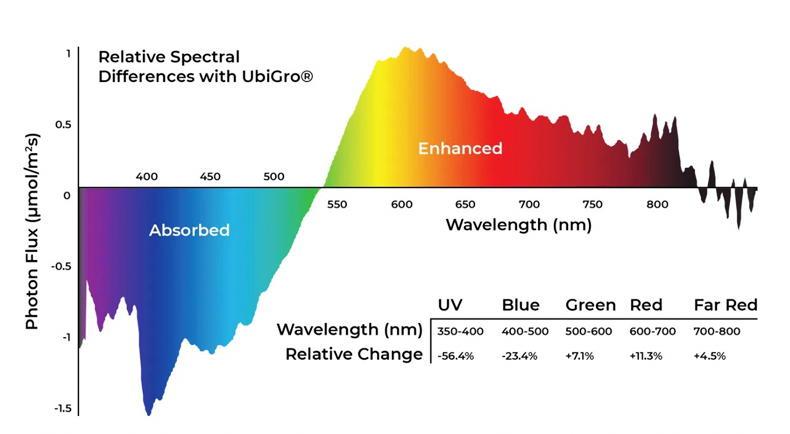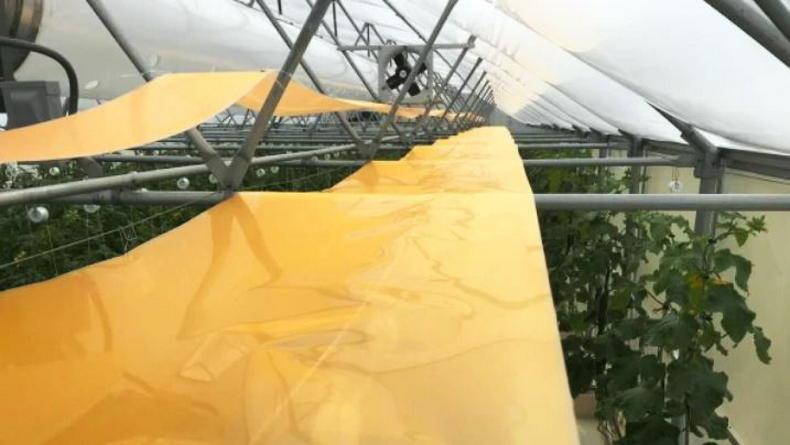Advanced materials company, UbiQD Inc, has developed a new ‘quantum-dot’ nanomaterial that is capable of manipulating colour and concentrating light.
The new technology is designed to be installed into traditional greenhouses and can manipulate sunlight without any use of electricity, resulting in a claimed increase in crop yields of up to 20%.
The company has been testing the material over the past two years and earlier this week, raised US$7m in a Series A funding round to help scale up the company.
How it works
The company’s patented film, called UbiGro is filled with semiconductor nanocrystals, known as quantum dots.
The film is lined on the interior of greenhouse roofs and when illuminated by sunlight, the quantum dots shift the wavelengths of the light as it passes through.
Relative photosynthetic efficiency is dependent on the wavelength of light. Wavelengths between 600-650nm (red/orange) are most efficient for photosynthesis.

Light wavelength spectrum.
By converting ultraviolet radiation and blue light to red/orange light, the film increases the photosynthetic efficiency of the light reaching the plant canopy.
The resulting wavelengths are more favourable for biomass accumulation, root development and flowering/fruiting.
Increased performance
By embedding the quantum dot technology into the film, the company has created an electricity-free approach to optimising the light spectrum for crops.

Installing the UbiGro light film.
Over the last two years, they have piloted the technology with various customers and institutes who have observed 8-20% yields increases with faster cycle times, reduced waste, and improved crop quality.
Advanced materials company, UbiQD Inc, has developed a new ‘quantum-dot’ nanomaterial that is capable of manipulating colour and concentrating light.
The new technology is designed to be installed into traditional greenhouses and can manipulate sunlight without any use of electricity, resulting in a claimed increase in crop yields of up to 20%.
The company has been testing the material over the past two years and earlier this week, raised US$7m in a Series A funding round to help scale up the company.
How it works
The company’s patented film, called UbiGro is filled with semiconductor nanocrystals, known as quantum dots.
The film is lined on the interior of greenhouse roofs and when illuminated by sunlight, the quantum dots shift the wavelengths of the light as it passes through.
Relative photosynthetic efficiency is dependent on the wavelength of light. Wavelengths between 600-650nm (red/orange) are most efficient for photosynthesis.

Light wavelength spectrum.
By converting ultraviolet radiation and blue light to red/orange light, the film increases the photosynthetic efficiency of the light reaching the plant canopy.
The resulting wavelengths are more favourable for biomass accumulation, root development and flowering/fruiting.
Increased performance
By embedding the quantum dot technology into the film, the company has created an electricity-free approach to optimising the light spectrum for crops.

Installing the UbiGro light film.
Over the last two years, they have piloted the technology with various customers and institutes who have observed 8-20% yields increases with faster cycle times, reduced waste, and improved crop quality.








 This is a subscriber-only article
This is a subscriber-only article










SHARING OPTIONS: